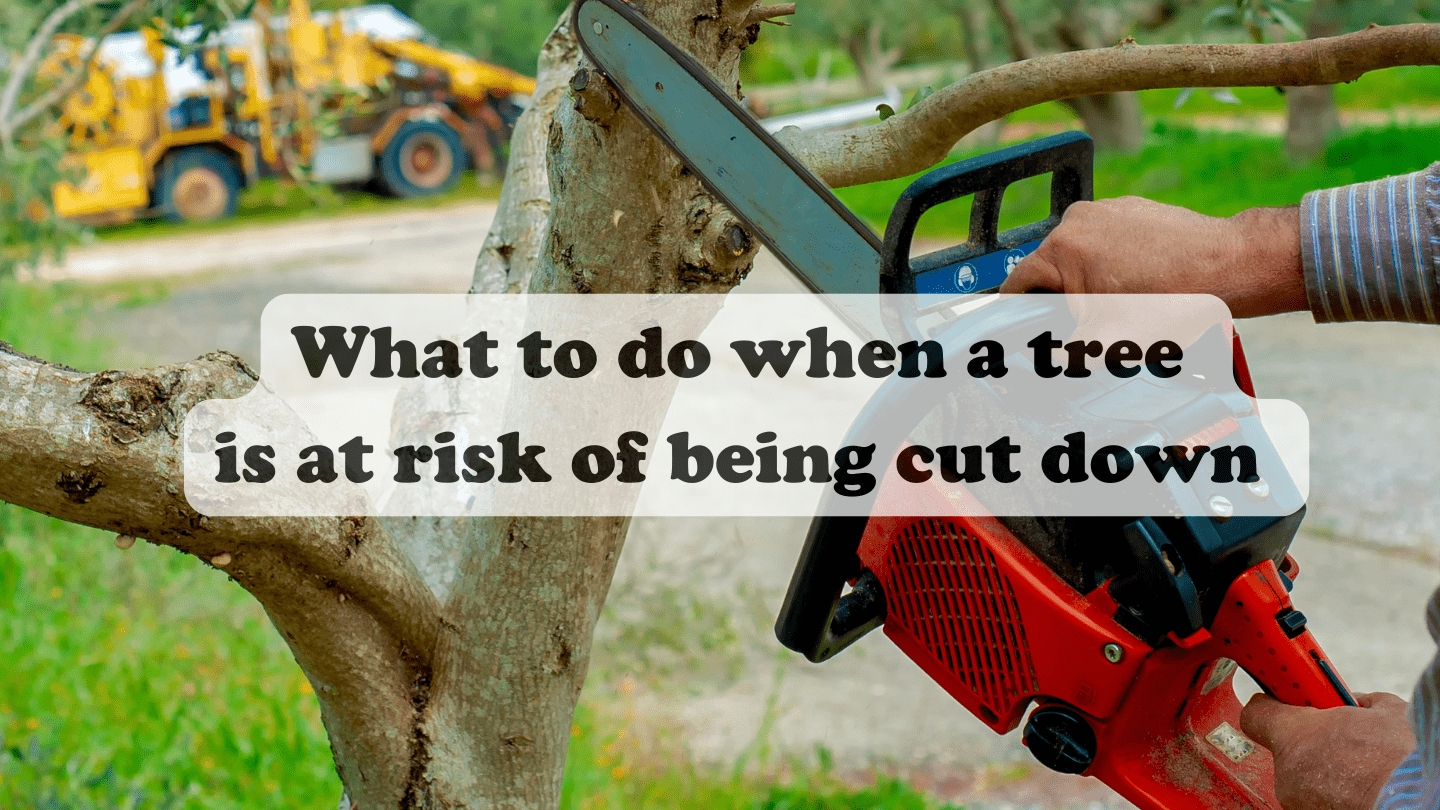Our urban forest is a precious resource. Trees help cool our streets in a warming climate, create critical habitat for wildlife, and beautify our neighborhoods, too.
We need to be planting more trees—especially in areas that have historically been disinvested in. And it can be extra frustrating when one is at risk of being cut down in your neighborhood.
Here’s what you can do about it:
1. Determine where the tree is located
The first step is to figure out if the tree is on public or private property, and what city and county it is located in. Different municipalities have different tree protection policies, and given that Los Angeles County alone is home to 88 different cities, it’s critical to determine who has jurisdiction over the site where the at-risk tree is located.
Once you know, you can research local ordinances, contact your public officials, or get in touch with the public works department to determine what official protections that tree might have.
2. Identify the species
Certain species of trees have a special protected status that may help defend them from removal. To find out the species of an at-risk tree, try inputting its characteristics into the SelcTree identification tool, taking a photo of it with the Seek app by iNaturalist, or consulting A Californian’s Guide to the Trees Among Us by Matt Ritter.
In the City of LA, California native oaks (excluding the scrub oak), Western sycamores, California bay laurels, the California black walnut, Mexican Elderberry, and Toyon all require permits to remove, even on private land.
Violations of the protected trees and shrubs ordinance can be reported at myla311.lacity.org.
3. Understand tree health
Sometimes, people cut down trees because of misconceptions about how a “healthy” tree should look. For instance, we often get calls from renters whose landlords want to remove a tree they’ve deemed “risky.” But not all trees that look dead are—they may be dormant or simply require better care.
In the City of LA, you can create a service request on the MyLA311 app for a tree health inspection. You can also consult a certified arborist, or utilize the many tree care resources we’ve compiled here on treepeople.org.
4. Organize with your community
Here at TreePeople, our goal is to preserve and expand our urban canopy, and we recommend tree removal only when there is imminent failure of the tree or if the tree is hazardous
to humans or other plants (aka invasive).
Even if a tree is not explicitly protected by local laws,
you can still fight to save it. Spread the word to your local community, connect with local environmental groups,
contact public officials, and show up to city hall to advocate
for its protection!

